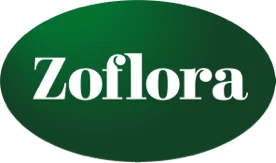Using Zoflora Safely Around Your Pets
Zoflora has been keeping homes hygienically clean and smelling beautiful for almost 100 years, and when used and stored correctly, is suitable for use around both people and pets. Read on to find out how!
There are three main ingredients in Zoflora – Alcohol, Benzalkonium Chloride and, of course, the perfume oils that give Zoflora that beautiful, long lasting fragrance.
Alcohol
Ethanol and Methanol are types of alcohol that are commonly used in cleaning products because they are easy to mix with other liquids whilst keeping the solution stable. Beyond this, once the Zoflora is correctly diluted, the alcohol doesn’t have any significant impact on the cleaning effect, but it does help to lift the perfumes to give the best possible fragrance experience.
Undiluted Zoflora is up to 75% ethanol, and up to 3% methanol, a similar ratio to those seen in most alcoholic hand gels. The alcohol is not caustic and will not harm skin, but it is very drying and can mildly dehydrate it - but only if you don’t rinse it off. This is why we recommend to always dilute Zoflora 1 in 40 with water, as per the on-pack instructions, when using it around pets. Alcohol does, however, mean that Zoflora is flammable when undiluted, so it is important to store bottles in cupboards and away from children and animals.
Benzalkonium chloride (BZC)
Benzalkonium chloride (BZC) is the key component of Zoflora’s anti-microbial and viricidal actions.
BZC is a negatively charged substance and most biological agents are positively charged. It works by attaching itself to viruses and bacteria, which being biological are positively charged, destroying their membranes and killing them. When it is in water or when surfaces are wet, it can be moved around and transfer to skin or paws, but once surfaces are dry it becomes permanently attached to them. The positive/negative bond cannot be broken, and so it cannot be moved and remains on the area.
This is why we advise excluding pets from the area whilst you are cleaning with Zoflora and waiting until surfaces are thoroughly dry before letting pets have access to them. Cats are particularly susceptible to irritation if allowed onto wet surfaces, since they wash themselves so frequently and can transfer BZC from their fur to the more sensitive tissues of their tongue, mouth and throat.
In concentrated Zoflora BZC is very irritant to the skin and eyes by itself, but will not usually cause significant harm at the levels in which it is contained in diluted Zoflora, especially if it is rinsed off quickly.
Perfume Oils
The perfume that Zoflora is famous for varies between the fragrances. It is an oil and is the reason why your Zoflora goes cloudy when water is added to it, the oil can dissolve into the alcohol but cannot in water.
It is possible to have allergic reactions to the fragrance oils, but these are very individual and pretty uncommon, both in people and in pets. In those instances where animals do appear to have had a reaction to Zoflora, especially where they have developed things like puffy eyes or faces, it is more likely to be an allergy than anything else and once treatment is given, and you make sure that particular fragrance isn’t used again in the home, it shouldn’t recur. A list of the allergens which can be found in each fragrance can be found on the carton of every bottle of Zoflora.
Perfume fumes can also be potentially problematic if breathed, in but only in large quantities, which is unlikely from the standard bottle of Zoflora, and once it is diluted it is even less likely to cause these issues, so feel free to enjoy the beautiful fragrances in every room of your home!

Using disinfectant products safely
Finally, let’s discuss some of the safety warnings and categories on the Zoflora pack itself and what they actually mean. These are a legal requirement on all household products and you will find similar versions on every pack in your cupboards, and usually relate to the product in its undiluted form.
‘Flammable Liquid’ - This means that undiluted Zoflora can catch fire. This is mainly due to the alcohol content, and why it should always be stored somewhere well away from any heat source or open flames. Once diluted, Zoflora becomes non-flammable.
‘Skin Irritant Category 2’ - This means that undiluted Zoflora can cause skin irritation, but any damage is reversible, and generally only develops after several hours of exposure. As you will obviously rinse it off you or your pets before that, this risk is hugely reduced. However, it is a good reminder of why it is so important to store the bottles securely, wear gloves when handling the neat product, and to keep the lids on tightly, so your pets don’t get access to it when unsupervised.
‘Eye Irritant Category 2’ - Similar to the skin category, undiluted Zoflora will cause irritation to eyes but any damage is reversible and, again, significantly mitigated against if eyes are rinsed quickly and thoroughly.
Hazardous to Aquatic Environment Chronic Category 3 - In its concentrated form, Zoflora is toxic to fish and other aquatic life and this is why it is not for use in cleaning fish tanks. However, it is safe to be washed away into the domestic water system because the dilution it will be in by the time it reaches any aquatic life will be so small, it will have no effect.
I hope this answers any questions you have about Zoflora and its safety. However, if you still have concerns, please feel free to contact our customer services team, who will be more than happy to help you. You can also visit our pet FAQs page here.

